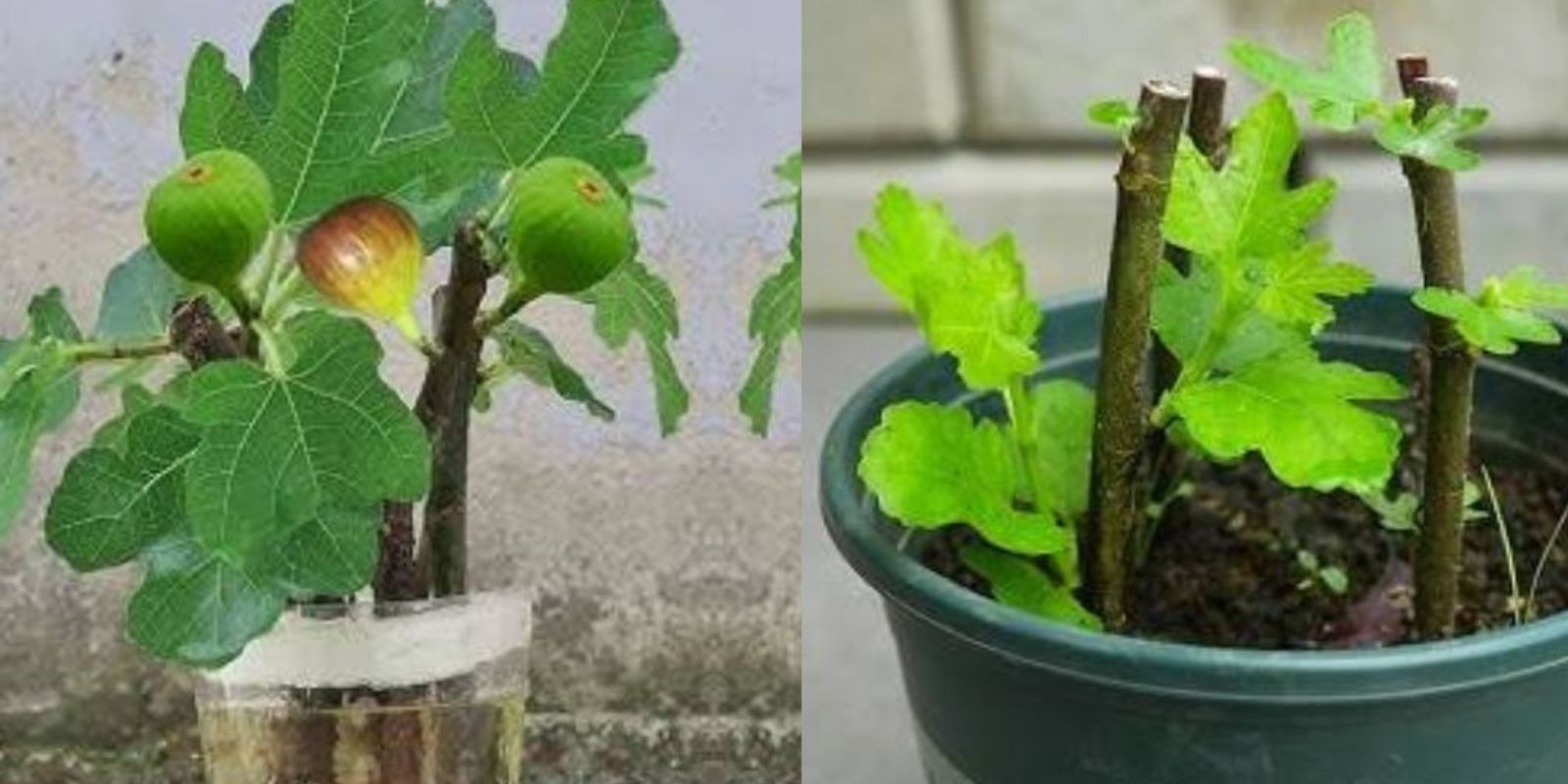Introduction
Figs (Ficus carica) are among the most rewarding fruit trees to grow at home, offering delicious, nutrient-rich fruit with minimal maintenance. Many people assume growing figs requires expensive seeds, saplings, or specialized equipment, but the truth is, you can start a fig tree at no cost using simple propagation techniques.
This guide will take you through the step-by-step process of growing figs from cuttings, using household materials and natural methods. Whether you have a small balcony or a spacious backyard, this budget-friendly approach will help you grow a healthy fig tree and enjoy fresh fruit for years to come.
Why Grow Figs at Home?
- Low Maintenance – Figs require little effort to grow once established.
- Drought-Tolerant – They thrive in dry conditions with minimal watering.
- High Yield – A single tree can produce dozens of figs per season.
- No Cost Propagation – You can grow figs from cuttings without spending money.
- Space-Saving – Figs can be grown in containers or small spaces.
Now, let’s explore how you can grow figs at home for free using simple propagation methods.
Step 1: Collecting Fig Cuttings
Instead of buying fig saplings, you can propagate new trees from cuttings taken from an existing tree.
- Find a healthy, mature fig tree (ask a friend, neighbor, or look for a public tree).
- Take a 6–10 inch cutting from a branch that is about the thickness of a pencil.
- Choose cuttings with multiple nodes (small bumps where leaves or roots will grow).
- Remove any leaves from the lower part of the cutting.
💡 Tip: The best time to take cuttings is in late winter or early spring before the tree starts growing new leaves.
Step 2: Preparing the Cutting
To increase the chances of successful rooting, prepare the cutting properly:
- Let it Dry – Place the cuttings in a shaded area for a few hours to let the cut end dry slightly.
- Dip in Rooting Aid (Optional) – Use natural rooting aids like cinnamon powder, honey, or aloe vera gel to encourage root growth.
- Choose a Propagation Method – You can root fig cuttings in water or soil.
Step 3: Rooting the Fig Cutting
Option 1: Rooting in Water
- Fill a clear glass or jar with water.
- Place the cutting in the water, ensuring at least two nodes are submerged.
- Keep the jar in a warm spot with indirect sunlight.
- Change the water every 3–5 days to prevent bacterial growth.
- Roots should start forming in 2–4 weeks.
💡 Tip: Once the roots are at least 2 inches long, the cutting is ready to be planted in soil.
Option 2: Rooting in Soil
- Fill a small pot with well-draining soil (mix garden soil with sand or compost).
- Insert the cutting 2–3 inches deep into the soil.
- Water lightly to keep the soil moist but not soggy.
- Place the pot in a warm location with indirect sunlight.
- In 4–6 weeks, the cutting should develop roots and new leaves.
Step 4: Transplanting the Rooted Cutting
Once the fig cutting has strong roots, it’s time to move it into a larger container or garden bed.
- Container Method: Use a 10-15 gallon pot with drainage holes.
- Garden Planting: Choose a sunny spot with well-draining soil.
- Soil Mix: A blend of compost, garden soil, and sand works best.
- Spacing: If planting multiple fig trees, keep them 6–10 feet apart.
After transplanting, water thoroughly and provide support if needed.
Step 5: Caring for Your Fig Tree
A well-cared-for fig tree can live for decades and produce abundant fruit. Follow these simple care tips:
1. Watering
- Figs are drought-tolerant, but young trees need regular watering.
- Water once a week in dry weather; reduce watering during the rainy season.
2. Sunlight
- Fig trees love full sunlight – at least 6–8 hours per day is ideal.
- If growing indoors, place the plant near a bright window.
3. Fertilizing
- Figs do well with minimal fertilization.
- Use banana peels, compost, or diluted coffee grounds as natural fertilizers.
- Avoid high-nitrogen fertilizers, which encourage leaf growth over fruiting.
4. Pruning
- Prune once a year to maintain shape and encourage fruiting.
- Remove any dead or weak branches in late winter.
5. Pest and Disease Control
- Figs are resistant to many pests, but watch for aphids and scale insects.
- Spray with neem oil or a soap-water solution if pests appear.
- Ensure good air circulation to prevent fungal diseases.
Step 6: Harvesting Your Figs
Fig trees take 1–2 years to start producing fruit. Here’s how to know when your figs are ready:
✅ Color Change – Ripe figs turn from green to purple, brown, or yellow (depending on the variety).
✅ Softness – Gently squeeze the fig; it should be soft but not mushy.
✅ Drooping – A ripe fig will slightly droop on the branch.
✅ Sweet Aroma – Ripe figs have a fragrant, sweet scent.
Harvest figs by gently twisting them off the branch. Eat them fresh, dry them, or use them in delicious recipes!
Common Questions About Growing Figs for Free
1. Can I grow a fig tree from store-bought figs?
No, because most commercial figs are seedless. Growing from cuttings is the best method.
2. How long does it take to grow figs from cuttings?
Cuttings take 4–6 weeks to develop roots and about 1–2 years to produce fruit.
3. Do fig trees need a lot of space?
No! They can be grown in large pots or small backyards.
4. How can I protect my fig tree in winter?
If grown in a

